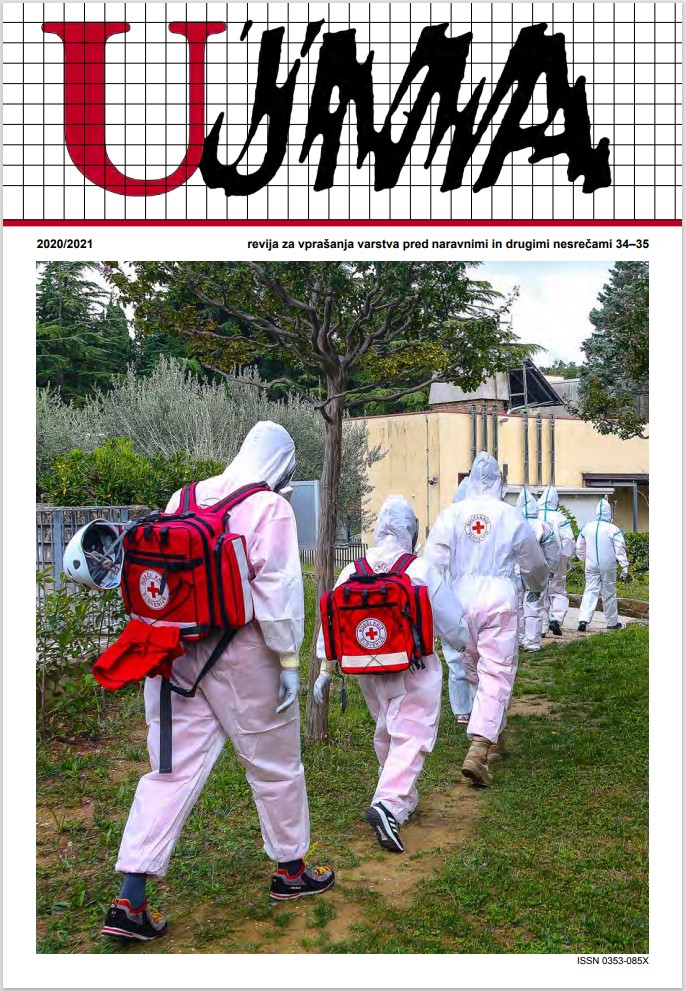WEATHER VARIABILITY OF THE VEGETATION SEASON 2019
Abstract
The year 2019 brought a great weather diversity: from above-average warm and dry February and an early spring drought to cold and wet April and May, followed by heat waves in the summer months and an “Indian summer” in October. Due to the rapid changes in the weather throughout the growing season, during parts of the year vegetation in many areas of Slovenia experienced drought stress despite a previously wet month, or an excess of moisture after a lasting rainless period. The beginning of the year was characterized by extremely early phenological development due to the unusually high air temperatures for that time of year, and early spring agricultural crops were affected by drought stress, with fire risk also present. April was marked by wet, and May also by cold and frost in some places. In most parts of Slovenia, the period from 12 to 15 May was the second coldest since the middle of the 20th century. Unstable weather led to delays in agricultural work such as maize sowing and planting vegetables, making mowing impossible and causing problems with the lodging of cereals and disease. The beekeeping season was also hindered. Along western Slovenia, the growing season could be roughly divided into a wet spring and a dry summer, while elsewhere the water situation of the season was more or less balanced due to alternating periods of wet and dry months. The entry into dormancy was marked by the October heat and a great number of rainless days, deepening the water deficit, especially in the north-west. Despite great weather variability, there was no major loss in crop production in 2019.
References
Arso, 2019. Visoka temperatura zraka od 26. do 28. februarja 2019. http://meteo.arso.gov.si/uploads/probase/www/climate/text/sl/weather_events/visoka-temperatura_26-28feb2019.pdf.
Arso, 2019 b. Zelo hladno vreme od 5. do 8. maja 2019. http://meteo.arso.gov.si/uploads/probase/www/climate/text/sl/weather_events/zelo-hladno-vreme_5-8maj2019.pdf.
Arso, 2019 c. Zelo hladno in vetrovno vreme od 12. do 15. maja 2019. http://meteo.arso.gov.si/uploads/probase/www/climate/text/sl/weather_events/zelo-hladno-vetrovno-vreme_12-15maj2019.pdf.
Dnevnik, 2019. Letošnja letina češenj zelo slaba, marelic največ v 10 letih. https://www.dnevnik.si/1042909554/posel/novice/letosnja-letina-cesenj-zelo-slaba-marelic-najvec-v-10-letih, 29. september 2019.
Gorenjski glas, 2019. Povprečna letina krompirja. http://www.gorenjskiglas.si/article/20190721/C/190729973/1035/povprecna-letina-krompirja, 21. julij 2019.
KGZS, 2019. Poročilo o stanju kmetijskih rastlin in škodah zaradi deževne pomladi 2019.
KIS, 2019. Prva ocena stanja v kmetijstvu v letu 2019.
Meteorološki in fenološki arhiv Agencije RS za okolje (Arso).
MKGP, 2019. Ukrep Finančna pomoč za nadomestilo škode v čebelarstvu v letu 2019. https://www.gov.si/novice/2019-10-10-ukrep-financna-pomoc-za-nadomestilo-skode-v-cebelarstvu-v-letu-2019/, 10. oktober 2019.
MMC, 2019. Čebelarji ob več kot polovico letine, država ponuja pomoč. https://www.rtvslo.si/okolje/novice/cebelarji-ob-vec-kot-polovico-letine-drzava-ponuja-pomoc/502684, 20. oktober 2019.
Radio Slovenija, 2019. Vpliv vremena na bolezni vrtnin. Kaj za pridelek na zelenjavnem vrtu pomeni letošnji mokri maj?, 17. 5. 2019.
SURS, 2019. Rastlinska pridelava, Slovenija, 2019. https://www.stat.si/StatWeb/News/Index/8753.
URSZR, 2019. CORS bilteni z dne 21. 2., 22. 2., 6. 3. in 20. 3.
Virag, B., 2019. Pogoji pridelave žit v rastni sezoni 2018/2019 (predstavitev). Dan pšenice 2019, Rakičan, 12. 6. 2019.
Virag, B. 2019 a. Pogoji pridelave koruze v letu 2019 (predstavitev). Dan koruze 2019, Rakičan, 11. 9. 2019.
Downloads
Published
Issue
Section
License

This work is licensed under a Creative Commons Attribution-NonCommercial-NoDerivatives 4.0 International License.
The articles are made available to the public under Creative Commons Attribution-NonCommercial-NoDerivatives 4.0 International (CC BY-NC-ND 4.0).


